Dangerous Self Driving Cars
A self driving vehicle, also known as an autonomous vehicle (AV) or driverless car, is a type of vehicle that uses a combination of sensors, cameras, software, artificial intelligence (AI), and advanced software to navigate, control, and drive itself.
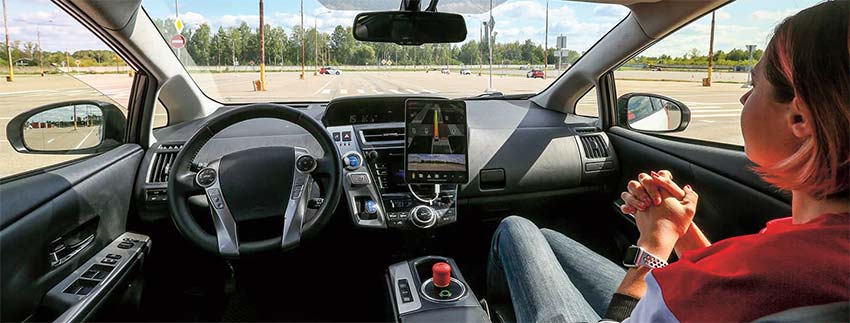
The technology behind self driving cars can perceive the surrounding environment, make decisions, and perform driving tasks such as accelerating, braking, and steering. Advanced Driver Assistance Systems (ADAS) have the potential to keep motorists and others who share the road safer, and the possibility of reducing or even eliminating accidents is a promising prospect.
However, with more autonomous vehicles sure to be on the road in the coming years, self driving car accidents are also expected to increase. If you're in a car accident involving a self driving vehicle, remember you're not alone. An experienced car accident attorney can be a crucial ally in helping you recover your rightful monetary compensation for your losses, including pain and suffering.
Texas Car Accident Lawyers
888-987-0005
At Miller Weisbrod Olesky, we understand that you may feel overwhelmed and uncertain about where to turn if you're hurt in a car accident with a self driving car. With decades of experience and a history of securing successful verdicts and settlements on behalf of our clients, our car accident attorneys are here to support you and hold negligent manufacturers and operators responsible for the harm they cause.
How Do Self Driving Cars Work?
Autonomous vehicles rely on various tools and advanced technology to keep them moving in the right direction and adjust when encountering obstacles. These systems use a combination of GPS, sensors, cameras, and algorithms to react to the environment and make data-based decisions.
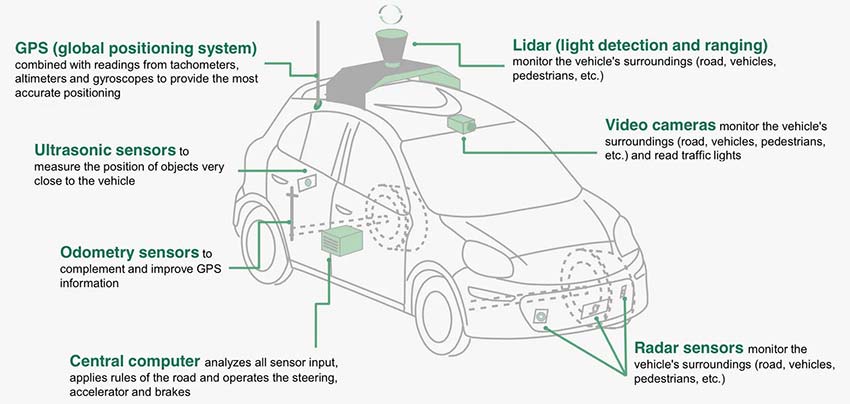
Almost all self driving cars use one or more of the following advanced sensors:
- LiDAR sensors: Using laser beams, these sensors assist vehicles in understanding their immediate surroundings. LiDAR sensors primarily look for lane markings, road edges, and obstacles ahead as they travel.
- Image sensors: These sensors use video cameras to monitor pedestrians, bicyclists, and other vehicles on the road. They can also read road signs.
- Ultrasonic sensors: These sensors use sound waves to determine the location of nearby obstacles. However, they mainly assist with parking.
- Radar sensors: Radar sensors use radio waves to detect nearby vehicles in real-time and determine their location and speed.

These sensors and systems enable self driving vehicles to navigate complex environments safely and efficiently. As the technology continues to evolve, the integration of these tools will only improve, making autonomous cars an increasingly viable and reliable mode of transportation. However, significant challenges remain, and as these vehicles become more prevalent on the road, the industry must continue addressing safety, cybersecurity, and regulatory compliance concerns.
The Levels of Autonomous Driving
Driver-assist technologies are standard in most newer cars. These features prevent drivers from drifting out of lanes, help the vehicle stop in time with automatic braking, and alert the driver to vehicles in their blind spot.
Parking assistance and adaptive cruise control are some of the more advanced features available to drivers. Self driving cars have different levels of automation, ranging from Level 0 (no automation) to Level 5 (full automation).
Human intervention becomes less necessary at higher levels of automation. For instance, Level 5 autonomous vehicles can operate completely independently without any human input under any conditions.
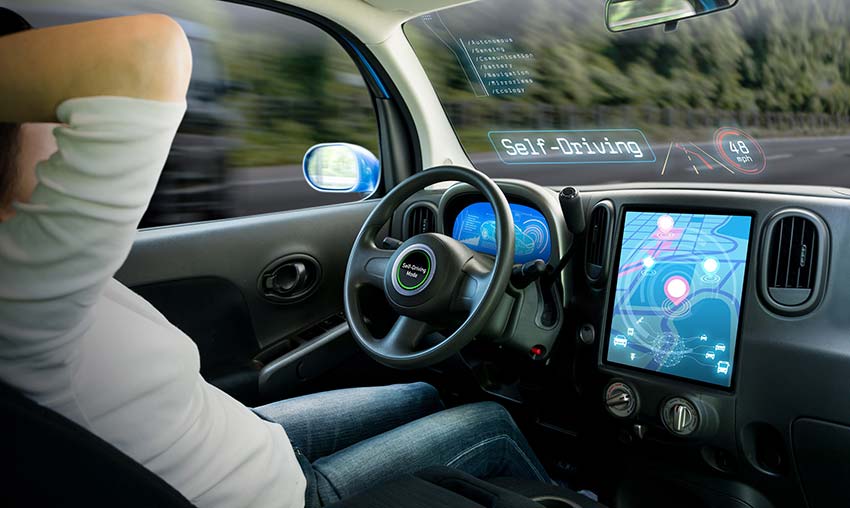
According to the NHTSA, there are six distinct levels of self driving vehicles:
- Level 0 (no automation): This category includes vehicles without any automation. The driver performs all tasks, including steering, braking, and accelerating. Features like live automatic emergency braking, forward collision, and lane departure warning are assistive and do not operate the vehicle.
- Level 1 (driver assistance): This level of technology can assist the driver with steering or acceleration/braking (but not simultaneously). In cars with level 1 technology, the motorist retains control of all other aspects of the vehicle. For example, when engaged, the system can detect when the driver is too close to the car in front of them and automatically reduces speed.
- Level 2 (partial driving automation): Vehicles with level 2 or partial driving automation feature advanced driver assistance and can perform steering and braking/accelerating simultaneously in some circumstances. However, while these systems are in operation, the driver needs to monitor the driving environment and perform all other tasks while behind the wheel. This category includes vehicles with adaptive cruise control and lane-keeping assist. Based on data from the NHTSA, between July 2021 and May 2022, self driving cars with Level 2 advanced driver assistance technology were involved in 392 crashes.
- Level 3 (conditional automation): The system can perform all driving tasks, but the driver must remain available to take over at a moment's notice. Cars with level 3 or partial automation can monitor their surroundings, perform steering and speed, and have an alert system that notifies the driver when they need to take control of the vehicle.
- Level 4 (high automation): These vehicles are fully responsible for driving under certain conditions, such as below a certain speed limit or within certain software-enabled areas (geofencing). Although these cars are capable of operating without human intervention, they still require human oversight if there is a system failure.
- Level 5 (full automation): When engaged, the vehicle can perform all driving tasks in every circumstance. These vehicles are 100% autonomous. However, there are currently no Level 5 cars available for consumers.
It will take time for laws, infrastructure, and cybersecurity to be ready before higher-level autonomous vehicles become a reality. In the meantime, governments must work to ensure the safety of autonomous vehicles currently being sold by establishing rigorous testing standards, conducting regular safety tests, implementing continuous monitoring systems, and updating regulations as the technology evolves. This ongoing commitment to safety and regulation will help build trust amongst the public and pave the way for future advancements in technology.
Self Driving Vehicles Accident Statistics and Facts
While it's difficult to get a precise figure, there are currently only a few thousand self driving vehicles on U.S. roads. The Department of Transportation (DOT) estimates that 33 million automated vehicles will be on U.S. roadways by 2040. Despite the rapid growth of the AV industry, the safety of self driving cars remains a contentious issue.
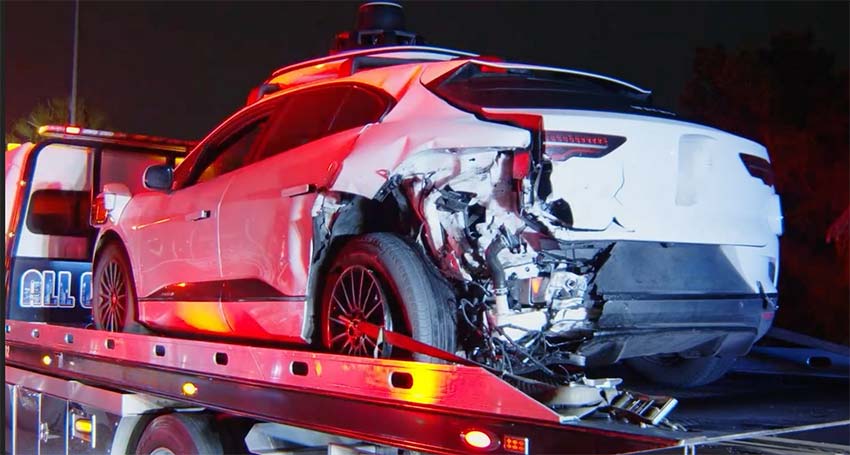
In fact, many people believe there are still a lot of unknowns about self driving cars, and the risk of removing human drivers is too much too soon. Regarding vehicles that drive themselves, safety is the number one consumer fear, with 36% of Americans indicating they do not trust the technology to protect drivers and pedestrians from harm.
Over a quarter of consumers indicate that they are most worried about the auto-pilot technology malfunctioning while they are on the road. Among these concerns are the risk of software or hardware failure, potential cybersecurity threats, and questions about how self driving cars should react in unpredictable circumstances.
Based on a review of more than 5,000 car accident reports, the Insurance Institute for Highway Safety (IIHS) found that although current self-driving technology has the potential to reduce accidents by around 34%, these vehicles continue to have difficulty avoiding, planning, and reacting to unexpected situations on the road.
According to the National Highway of Traffic Safety (NHTSA), self driving vehicles are involved in accidents at a rate of 9.1 million miles driven, which is higher than the conventional human-driven vehicle rate of 4.3 per million miles driven.
As of January 15, 2023, carmakers have submitted a total of 419 autonomous vehicle crash reports. Of those, 156 were truly autonomous, ADS-equipped vehicles, and 263 of those accidents involved partially autonomous cars. There were 18 fatalities linked to partially autonomous vehicles, and there have been no fatalities linked to fully autonomous vehicles.

Researchers found that 26.1% of self driving car accidents were caused by following other vehicles too closely, while 43.5% were caused by unsafe speeds. In comparison, 28.3% of conventional vehicle accidents were caused by tailgating, and 33.3% were caused by speeding.
Tesla is the leading automaker in terms of semi-autonomous technology. According to a study by the NHTSA on ADAS, more than 69% of all ADAS crashes involved a Tesla. While Tesla is leading the charge in self driving vehicle technology, traditional manufacturers like General Motors, Ford, and Volvo are all entering the market using proprietary technology.
In Texas, the driver of a Ford Mustang Mach-E SUV was using the company's "Blue Cruise" driver assist system before being involved in the fatal crash. Using Ford's Blue Cruise system on highways, drivers can take their hands off the steering wheel and let the vehicle handle steering, braking, and acceleration. However, the system isn't fully autonomous, and the company says it monitors drivers to ensure they are paying attention to the road.
The Mach E struck the rear of a 1999 Honda CR-V on Interstate 10 in San Antonio around 9:50 pm. The driver of the CR-V was taken to the hospital, where they later died of their injuries. It is important to remember that these accidents do not account for everything, and data may be skewed because many automated driving systems are still in their infancy.
For instance, the data does not consider whether the self-driving feature was in use at the time of a collision or whether the other vehicle caused the crash. Continuous research and development aim to refine the vehicle's sensors, communication systems, and decision-making algorithms to make autonomous vehicles safer and more reliable.
What Are the Current Laws on Operating Autonomous Cars?
A number of states have already enacted legislation governing autonomous vehicles and established standards to protect consumers from accidents. The NHSTA continually updates and adjusts federal guidelines regarding self driving cars, including the SELF-DRIVE Act.
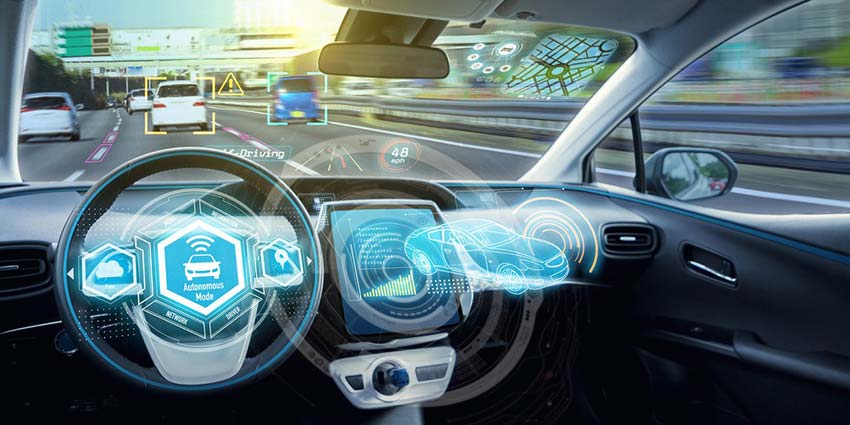
Currently, there are 21 states with laws that allow autonomous vehicles. Each state has different regulations that address the safety, insurance requirements, and technology regulations of self driving cars.
While these laws vary from state to state, autonomous vehicles are still required to adhere to applicable federal laws and regulations governing motor vehicles. As of 2017, Texas law (Section 545.451 through 545.455) allows for the testing and operating self driving cars on public roads, provided certain requirements are met.
According to the state law, autonomous vehicles must meet the following safety requirements:
- Autonomous vehicles must be registered and carry the required minimum amount of motor vehicle insurance.
- Self driving cars must be equipped with a data-recording system to provide accident investigators with information about the vehicle's automated driving system.
- Autonomous vehicles must be capable of complying with traffic laws in Texas.
- Self driving cars must have mechanisms that allow a human operator to take control if necessary.
Although self-driving technology holds great promise for reducing accidents caused by human error, it is clear that several significant challenges must still be addressed. If you were involved in an accident with a self driving vehicle, an experienced car accident lawyer can assist in identifying the responsible parties, gathering evidence, and negotiating with insurance companies.
Common Causes of Self Driving Vehicle Accidents
According to the NHTSA, over 90% of all car accidents are due to human error, such as distracted driving, excessive speeding, and failure to obey traffic signals. One advantage touted by autonomous vehicle makers is improved safety, as self driving cars don't get distracted, send text messages while driving, or drive while intoxicated. However, while autonomous vehicles are designed to reduce the likelihood of accidents caused by human error, they are not 100% safe or immune to collisions.
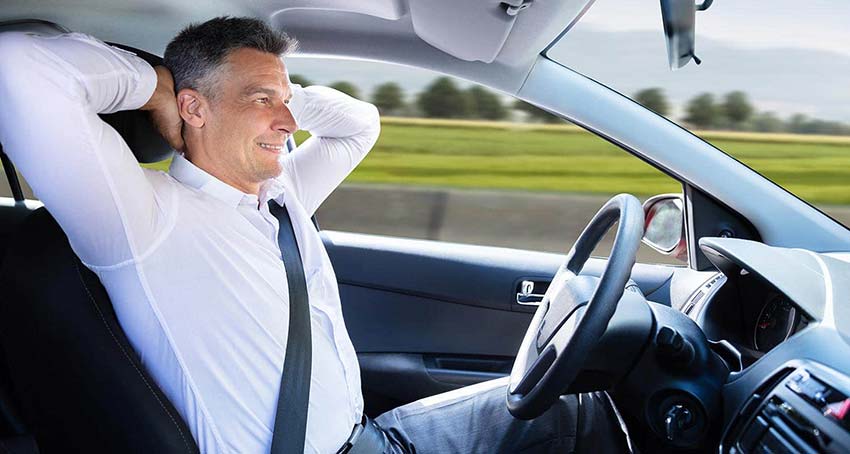
Some of the most common cause of self driving car accidents include:
- Software of hardware malfunctions
- Inadequate maintenance or updates
- Sensor or software errors
- Cybersecurity breaches
- Human intervention issues
- Insufficient mapping and localization data
- Failure to detect or respond to poor road conditions or unexpected obstacles
- Miscommunication between autonomous and manual vehicles
- Failure to detect or respond to complex or unusual traffic scenarios
Fully autonomous vehicles that require no human intervention are not available yet. As such, the driver of an autonomous vehicle may still be held liable for negligent behavior such as:
- Distracted driving
- Tailgating
- Aggressive or reckless driving
- Drowsy driving
- Driving under the influence of drugs or alcohol
- Not obeying the posted speed limit or traffic signals
Determining liability in autonomous vehicle crashes can be challenging, as it raises questions about whether the responsibility lies with the manufacturer, the software developer, or the vehicle owner. For example, when a human is in a self driving car, the vehicle may notify the driver to take over operation due to conditions like severe weather or complex traffic scenarios that are outside the car's autonomous capabilities.
This means that the driver of an autonomous vehicle may or may not be in control of the car when an accident occurs. In these cases, liability may be difficult to establish.
What Are the Risks Associated with Autonomous Cars?
While there's a lot of hype around self driving or driverless cars, vehicles that require no driver assistance or monitoring are not on the road yet. For instance, Tesla's "Full Self Driving" and "Autopilot" feature is really a partial self-driving feature designed to have human intervention and oversight.

Even though there are currently no fully autonomous vehicles on the market, one of the most significant risks of self driving cars is that they lull drivers into a false sense of security. Some drivers of autonomous vehicles believe that they don't need to remain engaged while driving. However, this is simply not the case. Anyone behind the wheel of a self driving car must remain engaged and alert, in order to quickly respond to changes in traffic and weather conditions. If a driver is distracted, they could drift from a lane or fail to react to sudden bursts of bad weather and cause a devastating collision.
Additionally, the new wave of self driving cars is electric, which utilizes lithium-ion batteries. These batteries can explode, release toxic chemicals and debris, and cause fires. Instead of recognizing the unique characteristics of autonomous technology, the NHSTA insists on enabling the fast deployment of self driving cars by amending rules written for vehicles with drivers.
While this may be the quickest way to authorize the deployment of self driving vehicles, it raises significant concerns about consumer safety. Rushing the adoption of autonomous cars without rigorous testing and updated safety regulations can lead to preventable accidents and fatalities.
Liability in Self Driving Vehicle Accidents
Identifying the liable party after a collision involving a driverless car can be tricky, however, as with any other automobile accident it is often determined by investigating the cause of the accident and then tracing that to who is responsible.
In order to recover damages following a self driving car accident, the plaintiff (the party who initiates a lawsuit) must prove the following four elements of negligence.
- Duty: The other party owed the plaintiff a duty of care
- Breach: The other party breached this duty
- Causation: The actions of the other party caused the accident
- Damages: The accident directly caused injury to the plaintiff, another passenger, monetary losses, or, in some cases, death
Generally, accountability for auto accidents falls on human drivers, but determining the responsible party could be complicated with self driving cars. Figuring out who may be liable in an accident when an autonomous vehicle is involved is difficult because there are multiple factors to consider, such as whether the automated driving system was engaged at the time of the accident, what the human driver's obligation was at the time of the collision, and ultimately if the system failed in some way.
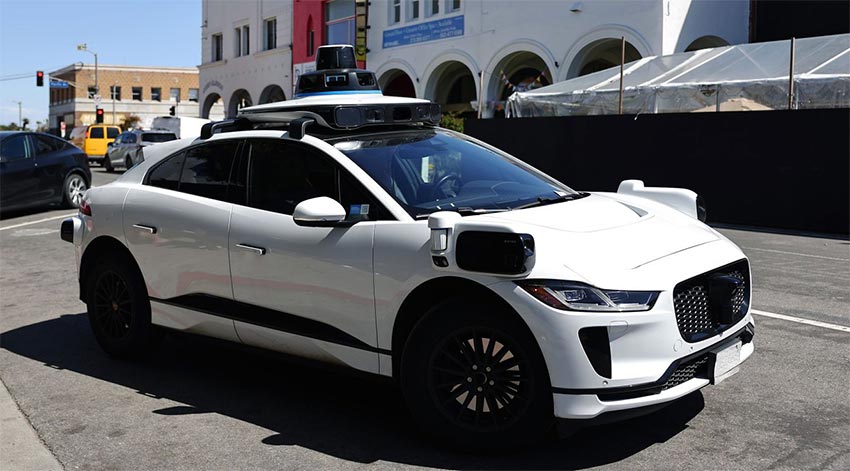
Potentially liable parties after a crash with a self driving vehicle may include but are not limited to:
- The vehicle’s designer
- The parts supplier
- The car manufacturer
- The sensor manufacturer
- The distributor
- A government entity
- The distributor
- A technology supplier
- The software developer
- A repair shop
- The driver of the vehicle
- The manufacturer of the automated technology
When the autonomous system is engaged, the vehicle owner is still responsible for the vehicle's compliance with all driving laws. If the driver of the car takes over for the automated system and is negligent, the driver could be liable for an accident resulting from their actions. Additionally, a third party, like a repair shop, may be responsible for failing to perform complete tests or shoddy maintenance work that causes vehicle failures and leads to a collision.
In the case of a technology defect or malfunctioning automated driving system, automakers may be liable for damages. If the autonomous vehicle technology fails to work properly and causes an accident, an injured victim may also bring a product liability claim against the vehicle's manufacturer or designer. If the victim claims a defect caused a self-driving crash, they must establish proof of injury, the extent of damages they suffered, and a connection between the injury and the defect.
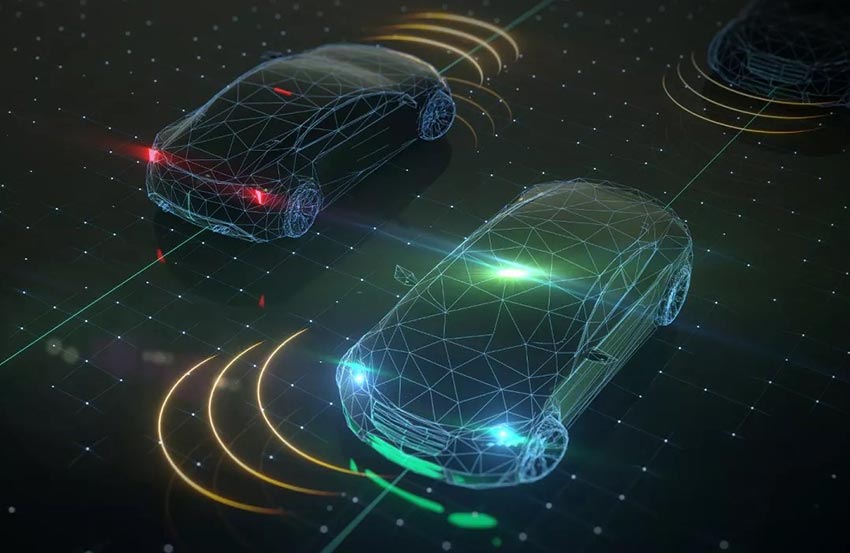
The government may share some responsibility if an accident occurs due to insufficient regulations or oversight. Governments need to work closely with manufacturers and developers to ensure the safety of self driving cars and others who share the road. Depending on the specific circumstances of the accident, liability may be shared among multiple parties.
Regardless of who is found to be responsible, if you were injured in an accident with a self driving vehicle, you are entitled to pursue compensation for your injuries. Our knowledgeable auto accident attorneys understand the unique challenges and liability concerns surrounding autonomous vehicle accidents in Texas and are prepared to conduct a thorough investigation to figure out who is liable for your injuries and other accident-related damages.
Steps to Take After a Collision with an Autonomous Car
After being involved in an autonomous vehicle accident, it is essential to stay calm and follow a series of steps to ensure everyone's safety and proper documentation of the incident. Understanding the unique challenges posed by self driving cars can help you navigate the aftermath more effectively.
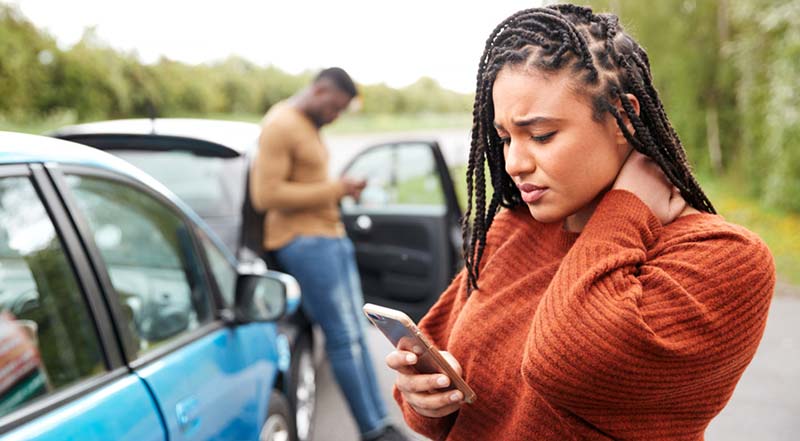
Here's what to do after a self driving vehicle accident:
- Contact law enforcement and request medical assistance as needed. Getting checked by a medical professional is essential even if you don't feel hurt, as some injuries may not be immediately apparent.
- Gather evidence by taking pictures and/ or videos of all vehicles involved, visible injuries, the surrounding road conditions, and any relevant signage.
- Collect contact information from any witnesses. Ask for their phone numbers or email addresses.
- Request information such as data from the vehicle's sensors, cameras, and logs. Make sure this evidence is preserved, as it may be crucial to understanding what happened.
- Determine the level of automation of the self driving vehicle involved. This information is essential to determining the extent of human involvement.
- Identify if the autonomous vehicle was maintained properly and that its software was up-to-date.
- Check for any recalls or known defects related to the self driving car.
- Review the insurance policies of all parties involved, including the autonomous vehicle and other relevant entities.
- Document whether a human driver was present and note their actions leading up to the crash. This may include whether they were ready to take control of the vehicle when necessary.
- Consult with a car accident attorney with experience in autonomous vehicle liability who can help you understand the applicable laws and regulations in your jurisdiction and navigate the legal complexities of your case on your behalf.
Navigating the aftermath of a vehicle collision can be overwhelming. It's essential to protect your rights and interests by having a skilled attorney on your side. An attorney with experience in autonomous vehicle accident cases can ensure all crucial evidence, such as sensor data and software logs, are preserved and analyzed appropriately. Additionally, your lawyer can negotiate with insurance companies to ensure you receive full and fair compensation.
Common Injuries from Self Driving Vehicle Accidents
Victims of driverless vehicle accidents often sustain injuries that can be just as serious and debilitating as any other automobile collision. These injuries can lead to long-term physical and emotional consequences, impacting the victim's overall quality of life.
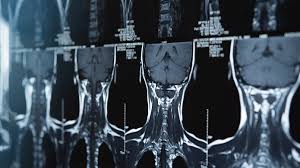
Some potential injuries from autonomous car wrecks include:
- Traumatic brain injuries
- Spinal cord injuries
- Whiplash
- Internal bleeding
- Paralysis
- Neck and back injuries
- Broken or fractured bones
- Organ damage
- Cuts and lacerations
- Soft tissue injuries
- Limb loss and amputation
- Burn injuries
- Psychological trauma
In the worst cases, fatal injuries can occur, leading to wrongful death claims. These tragic outcomes have a profound impact on the families and loved ones left behind. At Miller Weisbrod Olesky, our car accident attorneys are up to date on this evolving industry and are dedicated to providing the compassionate and effective legal representation our clients deserve.
Recoverable Damages in Driverless Car Accident Cases
Whether you were a driver, passenger, pedestrian, or bicycle rider, if you were involved in an accident caused by another party, you may be eligible to seek compensation for your injuries and other losses. This statement applies regardless of whether the other vehicle was autonomous or not. Contacting a lawyer and starting the claim process as soon as possible is crucial to protecting your rights and maximizing your chances of receiving fair compensation.

If you are involved in an auto accident involving a self driving vehicle and suffer injuries or other losses, our car accident attorneys can help you seek damages for the following:
- Medical care and treatment costs (past and future)
- Rehabilitation and surgery expenses
- Ambulance fees
- Ongoing healthcare costs
- Loss of income or wages
- Costs related to replacing or repairing damaged property
- Loss of future earning capacity
- Prescription and medical costs
- Car rental expenses
- In-home services costs
- Scarring, disfigurement, and permanent physical disability
- Loss of enjoyment of life
- Property damage expenses
- Emotional anguish
- Pain and suffering
- Other accident-related out-of-pocket costs
As with most car collision claims, how much you can recover after an autonomous vehicle accident will depend on several factors. There are a number of complex technologies that go into self driving cars, and the level of autonomy of the vehicle involved could significantly change the value of your lawsuit.
For example, liability may be shared with the driver and car maker in an accident involving a semi-autonomous vehicle. In cases involving fully autonomous vehicles, liability may be shared with both the driver and car maker. Don't struggle to make ends meet after being in an accident that was not your fault. We have a long history of helping clients recover compensation after collisions caused by self driving cars and are prepared to handle the complexities of your claim while you focus on healing.
Statute of Limitations for Car Accident Claims in Texas

Texas imposes a statute of limitations, which means if you suffer injuries or damages in a collision with a self driving vehicle, you have a limited time to file a personal injury lawsuit. In most car accident cases, this period is two years from the date of the accident. Failing to file within this time frame can result in losing your right to seek compensation. Our self driving car accident lawyers can evaluate your case and ensure your case is filed before the deadline.
Hit by a Self Driving Car?
Find Out How Our Lawyers Can Help
Self driving cars may seem like science fiction, but today, they are becoming an increasingly common sight on our roads. At Miller Weisbrod Olesky, our approach to autonomous car accidents is thorough and client-focused. We leverage our knowledge of cutting-edge technology and the latest legal precedents to build a strong case for our clients.
You can trust us to investigate the circumstances of your accident to pinpoint the cause, gather evidence to support your claim, and negotiate with insurance companies on your behalf. During your complimentary case review, we'll listen to your unique story and provide personalized legal advice tailored to your situation.
We believe everyone should have access to affordable and reputable legal representation, which is why we offer our services on a contingency fee basis. This means you will NEVER be responsible for any out-of-pocket fees or expenses unless/until we secure a settlement or verdict in your favor. To learn more about how we can help, call us at 888-987-0005 or fill out our online contact form.
Meet The Leader In Car Accident Litigation With A Record Of Multi-Million Dollar Settlements And Verdicts

With a 30-year history heading the Car Accident Department of Miller Weisbrod Olesky, firm partner Clay Miller has a proven record of holding negligent parties accountable and achieving multi-million dollar settlements and court verdicts for his clients. Clay has been consistently listed in Super Lawyers as one of the Best Lawyers in Texas, published in Texas Monthly, for over 15 years.
Clay is regularly invited to speak to Trial Lawyer Groups around Houston and across the state of Texas on the topics of motor vehicle accident laws, trial tactics and techniques, and how to prepare evidence and a winning legal strategy in Car Accident Cases throughout Texas. Clay was the featured speaker for the Texas Trial Lawyers Association on the new changes to trucking laws passed by the state of Texas.
Our car accident legal team includes Josh Birmingham, who is currently on the Dallas Trial Lawyers Board of Directors and served as the president of the Mesquite Bar Association for four years. Josh was named Thomson Reuters | Texas Super Lawyers Rising Star in 2016 and 2017.
We also have on our team Michael Orth, a board certified personal injury trial lawyer who has spent the last decade representing injured Texans and their families. Michael’s success in scores of personal injury cases across federal and state courtrooms has earned him the coveted Board Certification in Personal Injury Trial Law by the Texas Board of Legal Specialization.
Led by a formidable legal team with an extraordinary record of court verdicts and settlements in car accident cases, Miller Weisbrod Olesky is regularly recognized by the US News and World Report as one of the top injury law firms in the United States.
Miller Weisbrod Olesky Texas Car Accident Lawyers
Clay Miller

Clay is Board Certified in Personal Injury Trial Law by the Texas Board of Legal Specialization. Clay has practiced solely in the field of catastrophic injury and wrongful death since graduating from law school. His practice has been limited to the representation of victims. Over the past twenty-four years, Clay has successfully settled or tried to verdict cases in the areas of vehicular negligence, medical malpractice, construction site accidents, workplace injury, premises liability, and commercial trucking and a nationwide business loss case (suits filed in a dozen different states) involving defective truck engines sold to trucking companies.
Clay represented dozens of trucking companies in lost profit and diminished value claims against Caterpillar in 2010 through 2012. These cases were filed in over a dozen states with the bellwhether trial set in Federal Court in Davenport, Iowa. After intense litigation and trial preparation, a global confidential settlement was reached for all the clients.
Clay's most recent 2017 victories are a $30,800,000 jury verdict in Tennessee arising from fraud claims in the sale of heavy-duty truck engines and a $26,500,000 jury verdict in a construction accident, obtained within 60 days of each other.
Clay was raised in Lewisville, Texas and completed his undergraduate degree in Finance at
Texas A & M University. Following graduation from Southern Methodist University School of law, Clay worked for two Dallas firms representing victims. In 1998, Clay began his own practice before forming his current partnership. In addition to his law practice, Clay has lectured at seminars and published in the areas of construction accidents, jury selection techniques, medical negligence, trucking accidents and settlement tactics.
He is active in local and statewide trial lawyers' associations including serving as the Chair of the Advocates for the Texas Trial Lawyers' Association in 2002 and remains on the Board of Directors. Clay served as President of the Dallas Trial Lawyers Association from 2008-2009. He has also been a member of the American Board of Trial Advocates (ABOTA) since 2014.
Education
- Southern Methodist University School of Law - Dallas, Texas
- Texas A&M University - Finance - College Station, Texas
Areas of Practice
Associations & Memberships
- State Bar of Texas
- State Bar of New Mexico
- State Bar of Colorado
- American Board of Trial Advocates (ABOTA)
- Texas Trial Lawyers Association
- Dallas Trial Lawyers’ Association
- American Association of Justice
Josh Birmingham

Josh Birmingham was born in Las Cruces, New Mexico and raised in the small oil town of Hobbs, New Mexico. He graduated from the University of Nebraska in 2004 where he was a part of the Big 12 champion baseball team and was a College World Series participant.
He obtained his law degree from the University of Tulsa: College of Law in 2007 where he earned numerous awards in Mock Trial and Negotiation competitions.
Josh began his career at another prominent law firm where he fought for the victims of other’s negligence.
After 9 years Josh left being a trial lawyer and became an executive for a healthcare consulting firm but his passion for helping others in the law quickly pulled him back. Josh has tried numerous cases in both state and federal court. Josh began his first day with Miller Weisbrod Olesky in trial with Clay Miller representing an injured construction worker, Fernando Canales. Josh second chaired the trial and handled all of the medical expert testimony in the case.
Click Here: for complete verdict information
Josh is a member of the State Bar of Texas, American Association of Justice, Texas Trial Lawyers Association, Dallas Trial Lawyers Association, and Dallas Association of Young Lawyers. He is currently on the Dallas Trial Lawyers Board of Directors and served as the president of the Mesquite Bar Association for four years. Josh was named Thomson Reuters | Texas Super Lawyers Rising Star in 2016 and 2017.
Josh accredits his passion toward helping others to his mother Pam Parkinson, a nurse and business woman, and his father Ray Birmingham a college baseball coach.
Education
- University of Nebraska
- University of Tulsa - School of Law
Areas of Practice
Associations & Memberships
- American Association of Justice:
Member
- Texas Trial Lawyers Association:
Member
- Dallas Trial Lawyers Association:
Member
Board of Directors - Dallas Association of Young Lawyers:
Member
- Mesquite Bar Association:
Member
Michael Orth

Michael is a board certified personal injury trial lawyer who has spent the last decade representing injured Texans and their families. Born and raised in Dallas, Michael attended Texas A&M University where he earned a Bachelor of Science in Political Science. Following graduation, Michael worked in sales for one of the largest trucking companies in the United States. While working in the trucking industry, Michael saw the dangers that can and do occur when companies put profits before safety, and safety is not provided its proper place at the table. It was at this point Michael decided to pursue a career in law to help those harmed by the negligence of others.
Michael attended the University of Houston Law Center, where he served as a Senior Articles Editor for the Houston Journal of International Law. Throughout law school, Michael clerked at one of the 5 law firms that represented the State of Texas against Big Tobacco, where he worked on cases ranging from catastrophic crane collapses, to sexual abuse cases to environmental class action lawsuits. Most importantly, Michael learned the law could be used to do a lot of good in peoples’ lives, and could help those who had been injured because of the carelessness of others.
After obtaining his law license, Michael moved to South Padre Island and practiced personal injury law in the Rio Grande Valley. While practicing in South Texas, Michael tried nearly 20 cases in federal and state courtrooms across South Texas, consistently obtaining verdicts significantly higher than the insurance companies’ offers. As a result of his success in the courtroom, Michael is Board Certified in Personal Injury Trial Law by the Texas Board of Legal Specialization, a designation earned by practicing personal injury law almost exclusively, showing substantial success and experience trying personal injury lawsuits, completing extensive Continuing Legal Education in personal injury trial law, and passing a rigorous written exam demonstrating superior competence in handling personal injury cases.
Michael is married to Katlyn and has 2 young daughters, Kathleen and Mary Louise. Michael volunteers for the Dallas Volunteer Attorney Program, providing pro bono legal services to others in the community.
Education
- Texas A & M University
- University of Houston Law Center
Areas of Practice
Associations & Memberships
- American Association of Justice:
Member
- Texas Trial Lawyers Association:
Member

